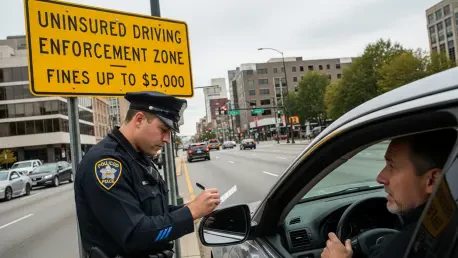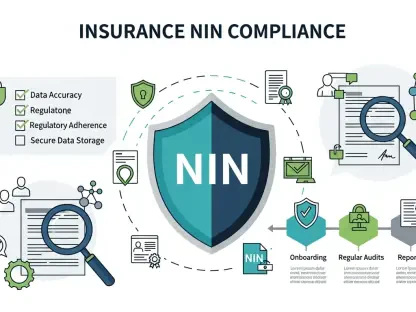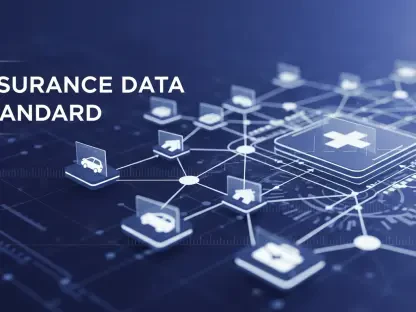I’m thrilled to sit down with Simon Glairy, a leading expert in insurance and Insurtech, who brings a wealth of knowledge on risk management and AI-driven risk assessment. With years of experience in navigating the complexities of the insurance industry, Simon offers unique insights into pressing issues like uninsured driving and its broader impacts. Today, we’ll dive into a recent enforcement campaign in South Yorkshire, exploring its implications for road safety, insurance premiums, and the collaborative efforts between law enforcement and the industry to tackle fraud and non-compliance.
How did the recent week-long campaign in South Yorkshire to address uninsured driving come about, and what were its primary objectives?
This campaign, which ran from November 10 to 17, was a focused effort by South Yorkshire Police in partnership with the Motor Insurers’ Bureau (MIB) to clamp down on uninsured drivers. The main goal was to remove these vehicles from the roads to enhance public safety and reduce the financial burden on insured drivers. They aimed to send a strong message about compliance while addressing a persistent issue that spikes costs for everyone else. It was a targeted operation, and the results were eye-opening, with over 100 vehicles seized in just that week.
What makes uninsured driving such a critical issue for both law enforcement and the insurance sector?
Uninsured driving is a double-edged sword. For the police, it’s a major road safety concern because these drivers often disregard other traffic laws, increasing the likelihood of accidents. For the insurance industry, it’s a financial drain. When uninsured drivers cause collisions, the costs don’t just disappear—they’re absorbed through schemes managed by organizations like the MIB. This means higher premiums for law-abiding drivers who are essentially footing the bill for others’ irresponsibility. It’s a fairness issue as much as a safety one.
Can you walk us through how the collaboration between South Yorkshire Police and the MIB played out during this crackdown?
The partnership was crucial and highly effective. They used advanced tools like Automatic Number Plate Recognition (ANPR) checks to scan vehicles in real time and cross-reference them against insurance databases. This tech allowed officers to spot uninsured drivers on the spot, often pulling them over within minutes. Real-time data sharing between the police and MIB ensured that there were no delays in identifying non-compliant vehicles. It’s a great example of how technology and collaboration can streamline enforcement and maximize impact.
What did the results of this campaign reveal about the extent of uninsured driving in South Yorkshire?
The numbers were staggering—106 vehicles seized in one week, compared to a usual average of about 10 per day. That’s a clear indicator of how widespread the problem is in the region. It suggests that uninsured driving isn’t just a handful of isolated cases but a systemic issue that needs ongoing attention. While this was a regional operation, it likely mirrors challenges across the UK, pointing to a national concern that goes beyond just one area.
How exactly does uninsured driving lead to higher premiums for those who follow the rules?
It’s a ripple effect. When an uninsured driver causes an accident, there’s no personal policy to cover the damages. Instead, claims are often processed through industry-backed funds managed by the MIB, which are ultimately funded by the premiums of insured drivers. So, every crash involving an uninsured motorist adds to the overall cost pool, pushing up premiums for everyone. It’s frustrating for compliant drivers who play by the rules but end up paying more to cover these gaps.
South Yorkshire Police noted that uninsured drivers are often linked to serious accidents. Can you elaborate on why that might be the case?
There’s a strong correlation between uninsured driving and risky behavior. Studies and police data show that these drivers are more likely to speed, drive recklessly, or operate unroadworthy vehicles. They’re often already disregarding one major legal obligation—insurance—so it’s not surprising that other rules get ignored too. This behavior increases the chances of severe crashes, endangering not just themselves but everyone else on the road. It’s a pattern that’s been observed consistently in accident statistics.
How do economic challenges influence the decision to drive without insurance, and what can be done about it?
Economic hardship plays a big role. When people are struggling to pay bills, insurance can seem like an easy expense to cut, especially since it’s not a tangible, immediate need until something goes wrong. We’ve seen spikes in uninsured driving during recessions or times of high inflation. Solutions aren’t simple, but offering more affordable insurance options, payment plans, or even public awareness campaigns about the real cost of driving uninsured could help. It’s about making compliance accessible rather than punitive.
In what ways does this crackdown tie into larger efforts to combat fraud and non-compliance in the insurance industry?
This operation is part of a broader push to clean up the system. Beyond just seizing vehicles, there’s a focus on using data analytics to detect patterns of fraud and non-compliance before they escalate. The MIB, for instance, doesn’t just assist with enforcement; they also work on prevention through education and supporting policies that promote fair pricing. These crackdowns are a visible piece of the puzzle, but behind the scenes, there’s a lot of work on systemic fixes to protect the integrity of the insurance market.
What do you see as the next steps for addressing uninsured driving in regions like South Yorkshire?
I expect we’ll see more of these targeted operations, likely with even sharper use of technology like ANPR and predictive analytics to pinpoint high-risk areas or repeat offenders. South Yorkshire Police have made it clear that regular seizures will continue, and I think we’ll also see stronger public messaging to deter this behavior. Collaboration with the MIB will remain key, as will efforts to address root causes like affordability. It’s a multi-pronged approach that’s necessary to chip away at the problem.
What’s your forecast for the future of tackling uninsured driving on a national level?
I’m cautiously optimistic. With advancements in tech, like real-time data systems and AI-driven risk assessment, we’re better equipped than ever to identify and address uninsured driving before it causes harm. However, the challenge will be balancing enforcement with prevention—making insurance more accessible while keeping the pressure on non-compliance. I think we’ll see tighter integration between law enforcement and the insurance industry over the next few years, alongside policies aimed at reducing economic barriers. It’s a complex issue, but the momentum is building toward meaningful change.









